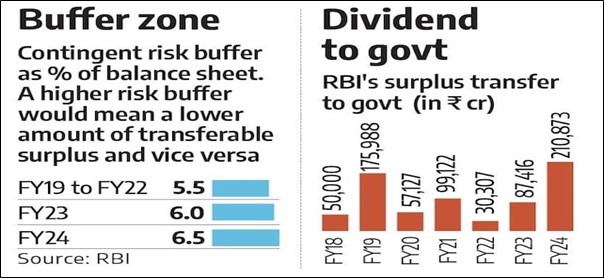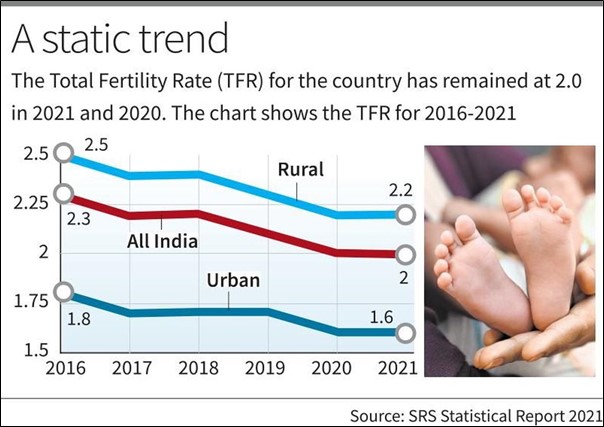|
One Liners 20-05-2025
|
|
Pushkar Kumbh Returns to Uttarakhand
After a 12-year gap, the Pushkar Kumbh Mela commenced in Uttarakhand on May 15, 2025, inaugurated by Chief Minister Dhami at Keshav Prayag, Mana village.
- Sacred Confluence Location - Held at the confluence of the Alaknanda and Saraswati rivers, this holy site attracts thousands of Vaishnavite devotees, especially from South India.
- Auspicious Astrological Timing - Celebrated when Jupiter enters Gemini, the Mela holds deep spiritual significance in Hindu tradition, believed to purify the soul and grant moksha.
- Historical and Mythological Links - Mana village is associated with Maharishi Ved Vyas. It's also believed that Ramanujacharya and Madhvacharya received divine knowledge here.
- Enhanced Infrastructure and Safety - The Uttarakhand government has upgraded the pedestrian route and installed bilingual signage. Police and SDRF personnel ensure pilgrim safety along the route and at the confluence.
- Intimate Spiritual Gathering - Unlike larger Kumbhs, Mana's Pushkar Kumbh offers a more personal spiritual experience, fostering north-south connection and preserving cultural and spiritual unity until May 26, 2025.
|
|
Tanot Mata Temple Reopens
The 1,200-year-old Tanot Mata Temple near the India-Pakistan border in Jaisalmer is recently reopening as cross-border tensions ease.
- Ancient Shrine to Hinglaj Mata - This revered Hindu temple in Rajasthan is dedicated to Tanot Rai, considered a manifestation of the goddess Hinglaj Mata, and was established by local tribes.
- Miraculous Wartime Survival - During the 1965 and 1971 Indo-Pakistan wars, the temple miraculously survived heavy bombardment, with thousands of Pakistani bombs failing to explode nearby, strengthening faith in the deity's protective powers.
- BSF Management and Remembrance - Following the 1971 war, the Border Security Force (BSF) took over the temple's management. The Indian Army built a Vijay Sthamba within the complex, and victory over Pakistan is commemorated annually on December 16th.
- Unexploded Bombs as Testimony - Unexploded bombs from the wars are preserved and displayed in the Tanot Museum within the temple premises, serving as a testament to the miraculous events and the temple's resilience.
|
|
Geography
|
|
Transforming North-East Connectivity
The Shillong-Silchar Highway, a 166.8 km four-lane corridor, will connect Meghalaya and Assam by 2030, becoming the region's first high-speed route and boosting economic activity.
- Infrastructure Initiative - Spearheaded by National Highways & Infrastructure Development Corporation Limited (NHIDCL) under India's Act East Policy.
- Aims to - Enhance trade and connectivity, providing a vital alternative to the Siliguri Corridor for accessing other North-Eastern states.
- Navigating Challenging Terrain - Construction in the hilly region necessitates advanced engineering to counter landslides, employing modern slope stabilisation and monitoring technologies for safety and durability.
- Cutting-Edge Technology Integration - LiDAR is used for precise surveys, while rock anchors and high-strength mesh provide protection. Piezometers and inclinometers will continuously monitor slope stability during and after construction.
- Catalysing Regional Growth - Projected to reduce travel time significantly from 8.5 to 5 hours, the improved connectivity is expected to stimulate trade and tourism, establishing the North-East as a crucial link to South-East Asia.
|
|
Economy
|
|
RBI Eases FPI Norms for Corporate Debt
The RBI has relaxed investment rules for Foreign Portfolio Investors (FPIs) in corporate debt, effective immediately, aiming to simplify investments.
- Abolished Investment Limits - Previously, FPIs faced short-term investment limits (max 30% under one-year maturity) and concentration limits (10-15% per issuer). These restrictions have now been removed.
- Significance of the Relaxation - This liberalises India's debt market, provides avenues for FPIs to retain sale proceeds, diversifies the investor base, and is expected to improve market liquidity and reduce borrowing costs.
- Corporate Debt Securities Defined - These are financial instruments like bonds and debentures issued by companies to raise funds, offering regular interest payments and principal repayment at maturity.
- Narrowing Yield Spread Challenge - A reduced difference between Indian and US 10-year bond yields (around 2%) makes Indian debt less attractive, potentially hindering significant FPI inflows despite eased norms.
- Impact of External Risk Factors - Geopolitical tensions and US Federal Reserve policies remain external risks that could make FPIs cautious and prefer safer assets, limiting the immediate impact of the relaxed regulations.
|
|
Environment
|
|
Odisha's Resilient Narayanpatna Goat
The Narayanpatna goat, native to Odisha's Eastern Ghats, is valued for its disease resistance and climate resilience but faces threats from crossbreeding.
- Unique Native Breed - This non-descriptive goat, raised by tribal communities in Koraput, southern Odisha, is known for its hardiness, high reproductive efficiency, and adaptability to harsh conditions.
- Native Habitat and Rearing - Found in Narayanpatna and Bandhugaon blocks within the Eastern Ghats, they are reared extensively in hilly, forested terrains with minimal inputs under a tropical monsoon climate.
- Distinctive Physical and Reproductive Traits - Medium to large in size with varied coat colours, curved horns, and drooping ears. Bucks weigh 30-35 kg, and does 25-30 kg, with frequent twinning and early kidding.
- Exceptional Disease Resistance - Naturally selected for strong resistance to common parasites, these goats require minimal veterinary care, showcasing their inherent hardiness.
- Socio-Economic Significance - They serve as a crucial source of meat, income, and cultural exchange, acting as a financial safety net, with women and children actively involved in their rearing, promoting inclusive livelihoods.
|
|
Ancient Three-Eyed Predator Discovered
Scientists recently described Mosura fentoni, a 506-million-year-old marine predator from the Cambrian period, belonging to the extinct Radiodonta group.
- Moth-Inspired Name and Location - Named after the fictional Mothra due to its moth-like appearance, fossils of Mosura fentoni were primarily unearthed in the Burgess Shale of the Canadian Rockies.
- Unique Physical Characteristics - This early arthropod, about the size of an adult index finger, possessed three eyes and an elongated body with swimming flaps, resembling modern rays in motion.
- Novel Abdomen-Like Respiratory Structure - Distinct among radiodonts, Mosura fentoni had a segmented rear section with gills, likely enhancing respiration and representing evolutionary convergence with modern arthropods.
- Insights into Early Arthropod Evolution - The discovery highlights the surprising diversity of early arthropods, offering rare details about their internal anatomy and evolutionary paths towards modern forms.
|
|
Security
|
|
Teesta Prahar: Riverine Readiness Validated
Recently, Indian Army conducted Exercise Teesta Prahar in West Bengal's Teesta Field Firing Range.
- The drill aimed -to confirm the operational readiness of combat and support units in challenging riverine environments.
- Integrated Military Branches - The exercise involved the Infantry, Artillery, Armoured Corps, Mechanised Infantry, Para Special Forces, Army Aviation, Engineers, and Signals, simulating real combat scenarios to test integrated operations.
- Core Exercise Elements - Key features included a strong emphasis on jointness for battlefield synergy, rapid troop mobility across complex terrain, the integration of advanced technology for warfare, and adaptability across diverse environments.
- Modern Weaponry Integration - A highlight was the validation of new-generation weapon systems, showcasing the Indian Army's dedication to modernisation and technological advancement for enhanced combat effectiveness.
- Broader Strategic Significance - Coming after successful joint Army-Air Force operations, Teesta Prahar reinforced interoperability. It's part of a larger strategy to bolster capabilities in modern warfare scenarios.
|
|
BSF: India's First Line of Defence
Amid heightened border tensions with Pakistan, the Border Security Force (BSF) stands as India's primary border guarding organisation and first line of defence, supporting the armed forces.
- Mandate and Deployment - Raised in 1965, the BSF protects India's land borders during peacetime, prevents transnational crime, and assists the Army in wartime.
- Deployed - along the Indo-Pakistan and Indo-Bangladesh borders, the LoC, and in anti-Naxal operations.
- Organisation and Capabilities - As the world's largest border guarding force, the BSF comprises 186 battalions with 2.57 lakh personnel. Notably, it is the only CAPF with its own Air Wing, Marine Wing, and artillery regiments, alongside specialised camel and dog wings.
- Unique Operational Units - The BSF maintains a unique Tear Smoke Unit (TSU) for producing riot control munitions. It also possesses powers of arrest, search, and seizure under various acts related to passports, customs, and narcotics.
- Leadership and Identity - The BSF's logo features grain spikes embracing the national emblem, with the motto "DUTY UNTO DEATH." The force is headed by a Director General, an officer from the Indian Police Service (IPS).
|
|
Miscellaneous
|
|
Literary Giants Honoured with 58th Jnanpith Award
President Droupadi Murmu bestowed the 58th Jnanpith Award upon poet-lyricist Gulzar and scholar-saint Rambhadracharya in New Delhi.
- Prestigious Recognition - India's highest literary honour acknowledges their profound impact on Indian literature. The award includes a citation, cash prize, and a Vagdevi idol.
- Celebrating Rambhadracharya - Known for Sanskrit epics and spiritual works, the visually impaired scholar also founded JRDSU, serving over 2,000 students.
- Honouring Gulzar's Artistry - The celebrated poet and songwriter, recipient of Oscars and a Grammy, is lauded for his evocative contributions to literature, cinema, and television.
- Significance of the Award - The event highlights India's diverse literary landscape, uniting devotional Sanskrit and contemporary Hindi poetry.
|


